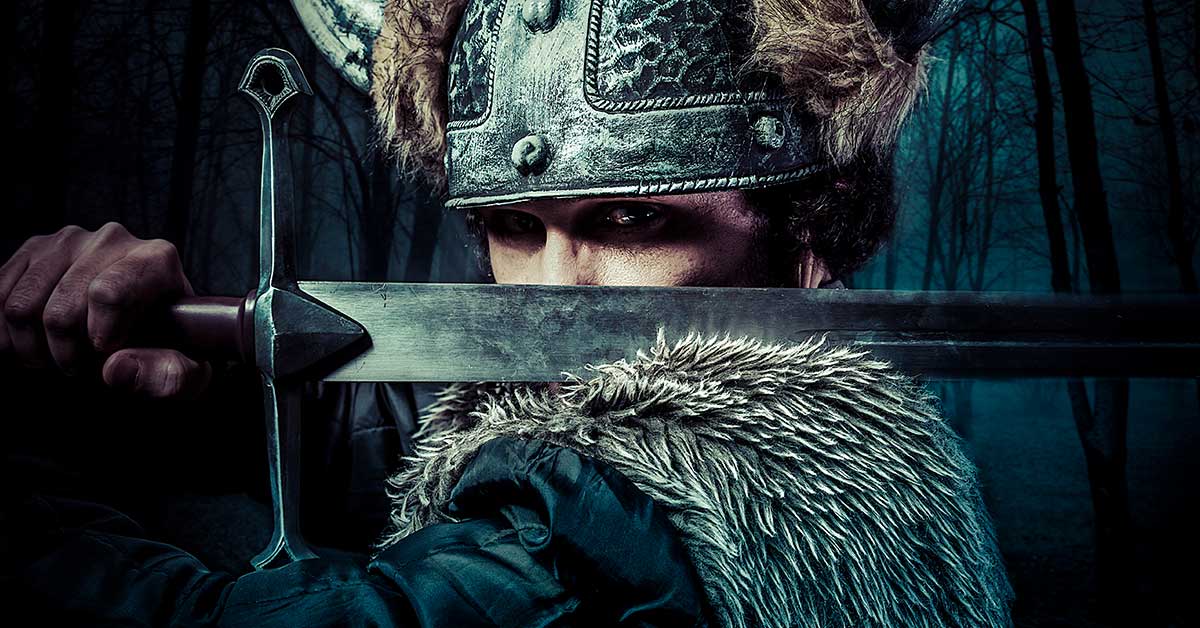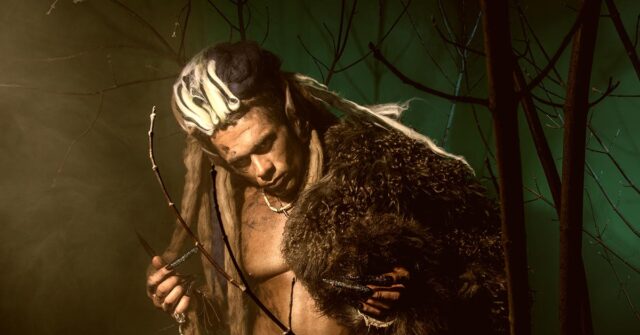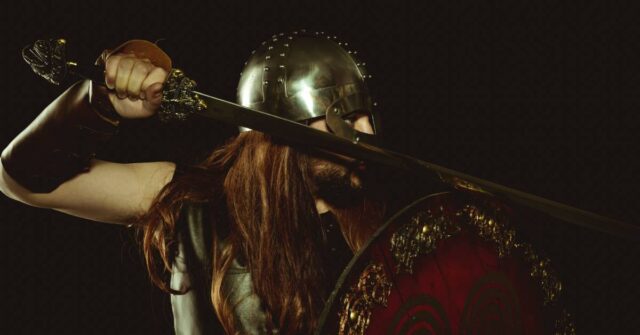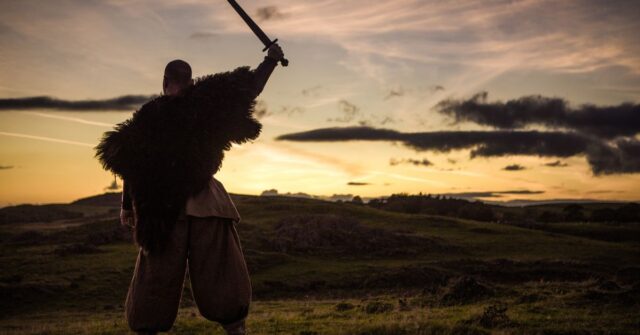Introduction to Viking Swords
The Viking Age was a time of great exploration, conquest, and cultural exchange. The Viking sword, a crucial weapon in the hands of the feared Norse warriors, played a vital role in this period of history.
Combining expert craftsmanship with deadly efficiency, these swords were not only tools of war, but also symbols of power and prestige.
In this article, we delve into the intricate world of Viking swords, exploring their types, production techniques, swordsmanship, and their lasting influence on history and culture.
The Role of Viking Swords in History
Throughout the Viking Age, which spanned roughly from the late 8th to the early 11th century, Viking swords played a pivotal role in shaping the course of European history.
These formidable weapons not only served as symbols of power but also as the primary tools of warfare during the Viking conquests and trade expeditions.
As such, they remain a tangible link to a time when Norse warriors ruled the seas and left their mark on the world.

The Importance of Swords in Viking Culture
Viking swords were not only weapons of war but also important status symbols and deeply ingrained elements of Norse culture.
A warrior’s sword was a reflection of his prowess in battle, as well as his social standing within the community. Furthermore, swords often played a key role in religious ceremonies, as offerings to the gods, and in mythology as the weapons of legendary heroes and divine beings.
Types of Viking Swords
Over the course of the Viking Age, sword design and construction underwent significant evolution and diversification. Various types of Viking swords emerged, each with its own unique characteristics and purposes.
In this section, we will explore the different types of Viking swords, from the visually striking pattern-welded swords to the enigmatic and highly sought-after Ulfberht swords, as well as the Petersen Typology that helps to classify and understand these weapons.
Pattern-Welded Swords
Pattern-welded swords were a common type of Viking sword, distinguished by their visually striking and complex patterns, which resulted from the unique forging process.
These swords were made by layering and twisting together various types of steel, creating a strong and flexible blade. The twisting of the steel layers created intricate patterns on the blade’s surface, which were often accentuated through acid etching.
Pattern-welded swords represented a high level of craftsmanship and were valued for both their functionality and aesthetic appeal.
Production Techniques
Pattern-welding was a technique used by Viking blacksmiths to create intricate and visually striking designs on sword blades. By twisting and folding different types of steel together, they could achieve a patterned, almost damascene appearance.
This not only enhanced the sword’s beauty but also increased its strength and flexibility.
Artistic Value and Design
Pattern-welded Viking swords were not only functional weapons but also exquisite works of art. The swirling patterns created by the blacksmiths’ skillful manipulation of different steels lent each sword a unique, captivating appearance.
These swords were highly prized possessions, often passed down through generations or presented as gifts to secure alliances and friendships.
Petersen Typology
The Petersen Typology is a classification system devised by archaeologist Jan Petersen to categorize Viking swords based on their hilt designs.
This typology, first published in 1919, identifies 26 different types, labeled A to Z, that reflect the evolving styles and construction techniques of Viking swords throughout the Viking Age.
While the Petersen Typology is an invaluable tool for understanding and studying Viking swords, it is important to note that it focuses primarily on hilt designs and does not account for the many variations in blade construction and decoration.
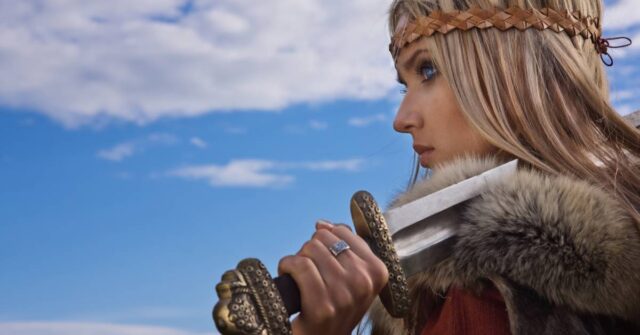
Type A: Pre-Viking Age Swords
While not technically Viking swords, the Type A swords in the Petersen Typology predate the Viking Age and provide important context for the development of later Viking sword designs.
These swords, characterized by their short, wide blades, and large, rounded pommels, were prevalent during the Germanic Migration Period (circa 300-700 AD).
Type B to E: Early Viking Age Swords
During the early Viking Age, sword design began to evolve. Type B through E swords featured longer, narrower blades, as well as more elaborate hilts and pommels.
These swords were better suited to the fast-paced, aggressive combat style favored by Viking warriors, and their ornate designs reflected the growing importance of swords as status symbols.
Type F to M: High and Late Viking Age Swords
As the Viking Age progressed, sword designs continued to become more refined and specialized. Type F through M swords featured even longer blades and more intricate hilts, often decorated with intricate inlays, carvings, or engravings.
Some of these swords were reserved for the most elite warriors and leaders, as they required considerable skill and resources to produce.
Ulfberht Swords
Ulfberht swords represent a pinnacle of Viking sword craftsmanship and are characterized by their high-quality crucible steel blades and the distinctive “+ULFBERHT+” inscription.
These swords were made from a type of steel that was both stronger and more flexible than the iron used in other contemporary swords, making them highly sought-after by Viking warriors.
The exact origin and meaning of the Ulfberht inscription remain subjects of debate among historians and archaeologists, with theories ranging from a master swordsmith’s name to a prestigious brand or mark of quality.
Superior Metallurgy and Craftsmanship
Ulfberht swords stand out as some of the most iconic and mysterious Viking swords ever discovered. These remarkable weapons, distinguished by their superior craftsmanship and metallurgy, were made from high-quality crucible steel, which was both stronger and more flexible than the iron used in other contemporary swords.
The exceptional quality of Ulfberht swords made them highly sought-after by Viking warriors, and they remain an enduring symbol of the skill and innovation of Viking blacksmiths.
The Mystery of the Ulfberht Inscription
One of the most intriguing aspects of Ulfberht swords is the enigmatic inscription, “+ULFBERHT+”, found on their blades.
The origin and meaning of this inscription remain a subject of debate among historians and archaeologists, with theories ranging from it being the name of a master swordsmith or workshop, to it being a prestigious brand or mark of quality.
Regardless of its true meaning, the Ulfberht inscription adds a layer of intrigue to these already exceptional weapons.
Sword Production and Materials
The creation of Viking swords was a complex and labor-intensive process, requiring both skill and access to quality materials. The forging techniques and resources employed by Viking blacksmiths not only impacted the performance of the swords in battle but also contributed to their artistic value and cultural significance.
In this section, we delve into the various sources of iron and steel used by the Norse, the forging techniques that set their swords apart, and the intricacies of hilt and pommel construction.
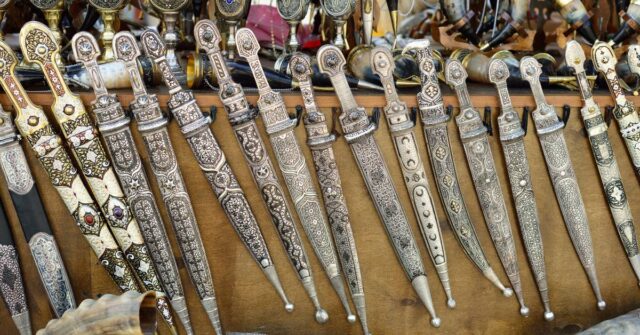
Iron and Steel Sources
Viking blacksmiths relied on a variety of local and imported iron and steel sources to forge their swords. While Scandinavian ores were readily available, many blacksmiths sought out higher-quality foreign steel, such as the crucible steel used in Ulfberht swords, which likely originated in Central Asia.
The trade of these valuable materials helped to fuel the Viking Age’s expansive network of commerce and cultural exchange.
Forging Techniques
Viking blacksmiths employed a range of forging techniques to create their swords, each with its own unique advantages and challenges.
Some of the most notable techniques include pattern-welding, which involved layering and twisting different types of steel together to create visually stunning and functional weapons, and the use of crucible steel in the production of Ulfberht swords.
Other important steps in the sword-making process included quenching and tempering, which improved the strength and durability of the finished weapon.
Pattern-Welding
As previously mentioned, pattern-welding was a key forging technique used in the production of many Viking swords.
By layering and twisting different types of steel together, blacksmiths were able to create both visually stunning and highly functional weapons.
This technique required exceptional skill and expertise, and the resulting swords were a testament to the artistry and technical prowess of their makers.
Quenching and Tempering
Quenching and tempering were crucial steps in the sword-making process, as they significantly improved the strength and durability of the finished weapon.
After forging the blade, blacksmiths would heat it to a high temperature and then rapidly cool it by plunging it into water or oil.
This process, known as quenching, made the steel harder, while the subsequent reheating, or tempering, ensured that the blade retained some flexibility to prevent it from being too brittle.
Hilt and Pommel Construction
The hilt and pommel of a Viking sword were not only essential for ensuring a secure grip during combat but also served as a platform for artistic expression and craftsmanship.
These components were often crafted from a variety of materials, including wood, bone, and various metals, and adorned with intricate carvings, inlays, or engravings.
The choice of materials and decorative techniques often reflected the wealth and status of the sword’s owner, as well as the skill of the artisan who crafted it.
Materials and Decorative Techniques
The hilts and pommels of Viking swords were often crafted from a variety of materials, including wood, bone, and various metals.
These components were frequently adorned with intricate carvings, inlays, or engravings, featuring designs that ranged from geometric patterns to depictions of animals, mythological creatures, and other symbols.
The choice of materials and decorative techniques often reflected the wealth and status of the sword’s owner, as well as the skill of the artisan who crafted it.
Symbolism and Inscriptions
In addition to their aesthetic appeal, the decorations and inscriptions found on Viking sword hilts and pommels often held deeper symbolic meanings.
Some designs, such as the famous “gripping beast” motif, were intended to convey strength and ferocity, while others featured religious or mythological themes. Inscriptions, like the enigmatic Ulfberht mark, could serve as a brand, a blessing, or a commemoration of a significant event.
The interplay of symbolism and artistry on Viking sword components added an extra dimension to these already formidable weapons, making them deeply personal and meaningful to their owners.
The Art of Viking Swordsmanship
Mastering the use of a Viking sword was no easy feat, requiring strength, agility, and a deep understanding of various combat styles and techniques.
Viking swordsmanship was a crucial aspect of the warrior culture, and proficiency in the use of these weapons could mean the difference between life and death on the battlefield.
In this section, we explore the combat styles and techniques employed by Viking warriors, the importance of sword care and maintenance, and the role of training in developing a warrior’s skill and reputation.

Combat Styles and Techniques
Viking swordsmanship encompassed a range of combat styles and techniques, often dependent on the specific type of sword being used.
Defensive techniques included parrying and deflecting enemy blows, using the sword’s crossguard and pommel for close-quarters combat, and combining the use of sword and shield for maximum protection.
Offensive strategies focused on swift, powerful strikes, often targeting vulnerable areas such as the neck, legs, and joints to incapacitate or kill opponents quickly.
Single-Handed vs. Double-Handed Grips
Viking swordsmanship encompassed a range of combat styles and techniques, which often depended on the specific type of sword being used.
Most Viking swords were designed for single-handed use, allowing the warrior to wield a shield in their other hand for protection.
However, some longer and heavier swords, such as the later Type M swords, were occasionally used with a double-handed grip, enabling more powerful strikes and greater control.
Defensive and Offensive Strategies
Viking warriors employed a variety of defensive and offensive strategies in battle, leveraging the unique qualities of their swords.
Defensive techniques included parrying and deflecting enemy blows, using the sword’s crossguard and pommel for close-quarters combat, and combining the use of sword and shield for maximum protection.
Offensive strategies focused on swift, powerful strikes, often targeting vulnerable areas such as the neck, legs, and joints to incapacitate or kill opponents quickly.
Sword Care and Maintenance
Proper care and maintenance of a sword were essential to ensure its effectiveness in battle and to maintain its value as a status symbol.
Viking warriors would regularly sharpen and polish their swords, as well as oil the blades to prevent rust. The hilt and pommel components would also be cleaned and maintained to preserve their decorative elements and ensure a secure grip during combat.
Training and Warrior Culture
Viking warriors were trained in the art of swordsmanship from a young age, honing their skills through rigorous practice and mock battles.
This training was an integral part of the warrior culture, fostering a sense of camaraderie and competition among fighters. The mastery of swordsmanship was a key component of a warrior’s reputation and status within the community, and the stories of legendary sword-wielding heroes served as inspiration for generations of Norse fighters.
Viking Swords in Mythology and Legend
The Viking sword was not only a weapon of war but also a powerful symbol in Norse mythology and legend. These mythical and legendary swords were imbued with special powers or associated with heroic deeds, reflecting the cultural significance and fascination with these weapons.
In this section, we delve into some of the most famous legendary swords in Norse mythology and explore the role of swords in Viking sagas and poetry.

Legendary Swords in Norse Mythology
Norse mythology is rich with tales of legendary swords wielded by heroes and imbued with magical powers. Some of the most famous examples include Gram, the sword used by the hero Sigurd to slay the dragon Fafnir in the Volsunga Saga, and Tyrfing, a cursed sword forged by dwarves and featured in the Hervarar Saga.
These legendary swords not only played central roles in their respective sagas but also served as powerful symbols of the cultural significance and fascination with swords in Norse society.
The stories of these mythical weapons continue to inspire and captivate audiences to this day, reflecting the enduring appeal and influence of Viking swords in both historical and modern contexts.
Gram: The Sword of Sigurd
One of the most famous swords in Norse mythology is Gram, the legendary weapon wielded by the hero Sigurd in the Volsunga Saga.
Gram was said to be so sharp that it could cleave an anvil in two, and it played a crucial role in Sigurd’s slaying of the dragon Fafnir.
The tale of Sigurd and Gram has inspired countless retellings and adaptations throughout the centuries, and the sword remains a symbol of heroism and courage in Norse mythology.
Tyrfing: The Cursed Sword
Tyrfing is another legendary sword from Norse mythology, featured in the Hervarar Saga. Forged by the dwarves Dvalinn and Durin, Tyrfing was cursed so that it would bring death and misfortune to whoever wielded it.
Despite its dark reputation, Tyrfing was an incredibly powerful weapon, said to be able to cleave through iron and stone as easily as cloth. The story of Tyrfing serves as a cautionary tale about the dangers of unchecked power and the consequences of curses.
The Role of Swords in Viking Sagas and Poetry
Swords feature prominently in many Viking sagas and poems, often serving as symbols of bravery, honor, and vengeance. These literary works highlight the importance of swordsmanship in the daily lives of Viking warriors, as well as the deep emotional and cultural connections they had with their weapons.
From tales of legendary heroes wielding magical swords to the poetic descriptions of battles and duels, swords are an integral aspect of the rich tapestry of Viking literature and oral tradition.
The Legacy and Influence of Viking Swords
The impact of Viking swords extends far beyond the Viking Age, influencing later European sword designs, inspiring modern popular culture, and serving as valuable historical artifacts.
In this section, we examine the various ways in which Viking swords have left their mark on history and continue to captivate and inspire us today.
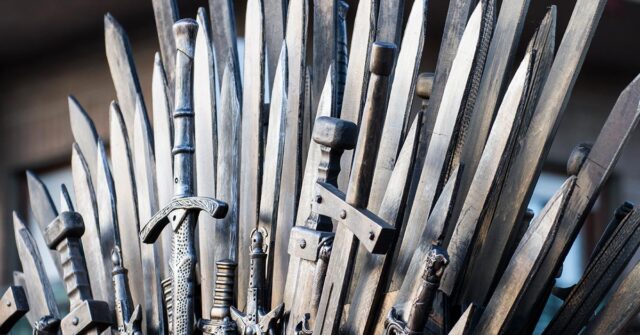
Viking Swords in Modern Popular Culture
The enduring fascination with Viking swords can be seen in their frequent appearances in modern popular culture. From movies and television shows to video games and novels, Viking swords continue to captivate audiences with their unique designs, legendary origins, and associations with Norse mythology.
These depictions serve as a testament to the lasting impact of Viking swords on our collective imagination, even centuries after the end of the Viking Age.
The Impact on Later European Sword Designs
The influence of Viking swords can also be seen in the development of later European sword designs. As the Viking Age came to a close and new styles of warfare and weaponry emerged, many of the innovations and techniques pioneered by Viking blacksmiths were adopted and adapted by other cultures.
From the knightly swords of the Middle Ages to the rapier and smallsword of the Renaissance, the legacy of Viking swords can be traced throughout the evolution of European martial arts and craftsmanship.
Viking Swords as Artifacts and Collectibles
Today, Viking swords are highly prized artifacts and collectibles, providing valuable insights into the lives and culture of the people who forged and wielded them. Museums, private collectors, and enthusiasts alike cherish these remarkable weapons, not only for their historical significance but also for the incredible skill and artistry they represent.
The study and preservation of Viking swords continue to contribute to our understanding of this fascinating period in human history.
Conclusion
Viking swords remain an enduring symbol of the strength, skill, and spirit of the people who forged them and the warriors who wielded them in battle.
From their intricate designs and exceptional craftsmanship to their prominent roles in mythology and literature, these iconic weapons continue to captivate and inspire us today, centuries after they were first forged.
The Continuation of Swordsmanship and Craftsmanship
Although the Viking Age has long since passed, the art of swordsmanship and the craftsmanship of sword-making continue to evolve and flourish.
Modern blacksmiths and artisans draw inspiration from the techniques and traditions of their Viking predecessors, while practitioners of historical European martial arts seek to revive and preserve the combat skills of the past.
In this way, the legacy of Viking swords and the culture that created them lives on, a testament to the indomitable spirit of the Norse people.

